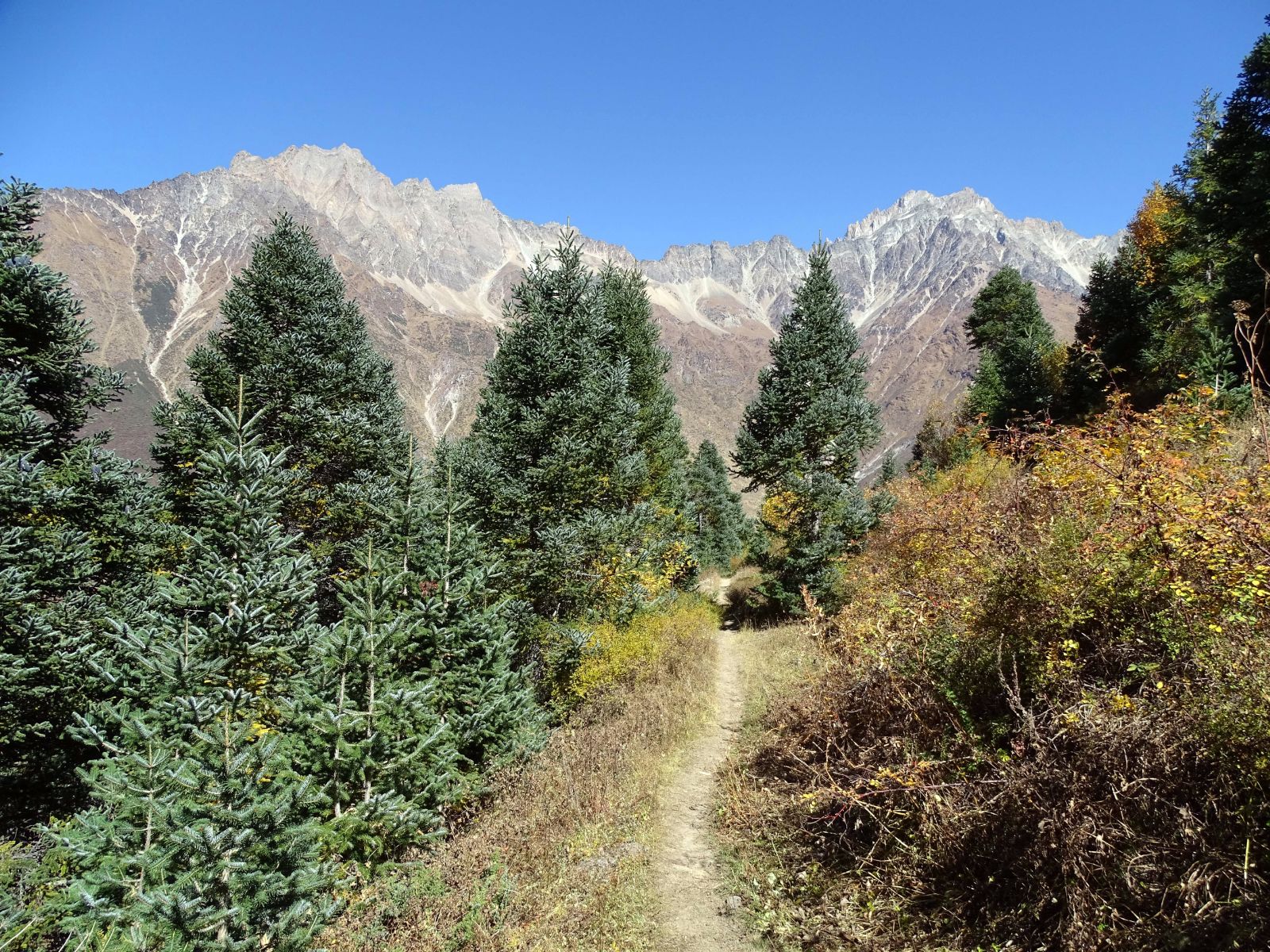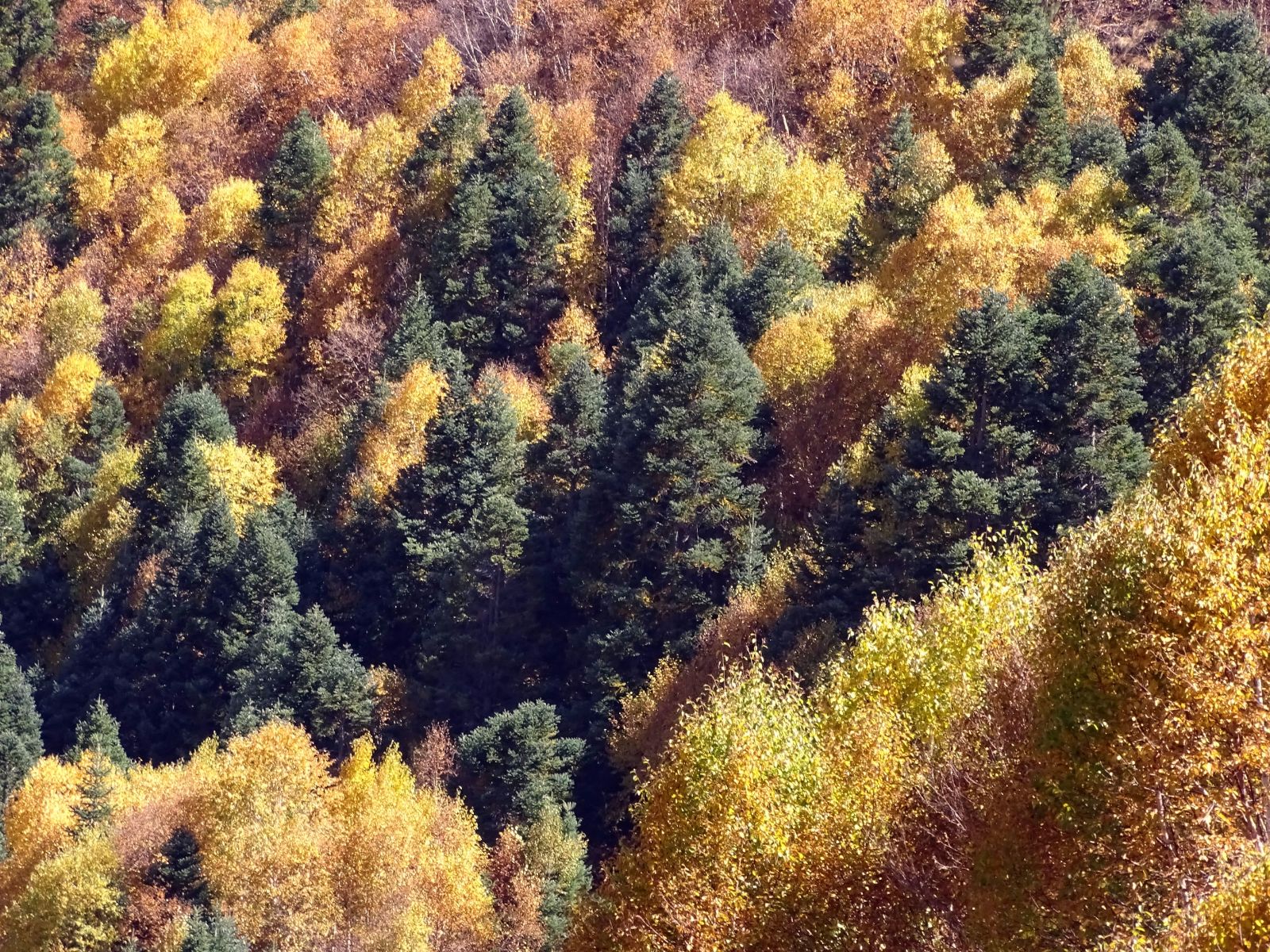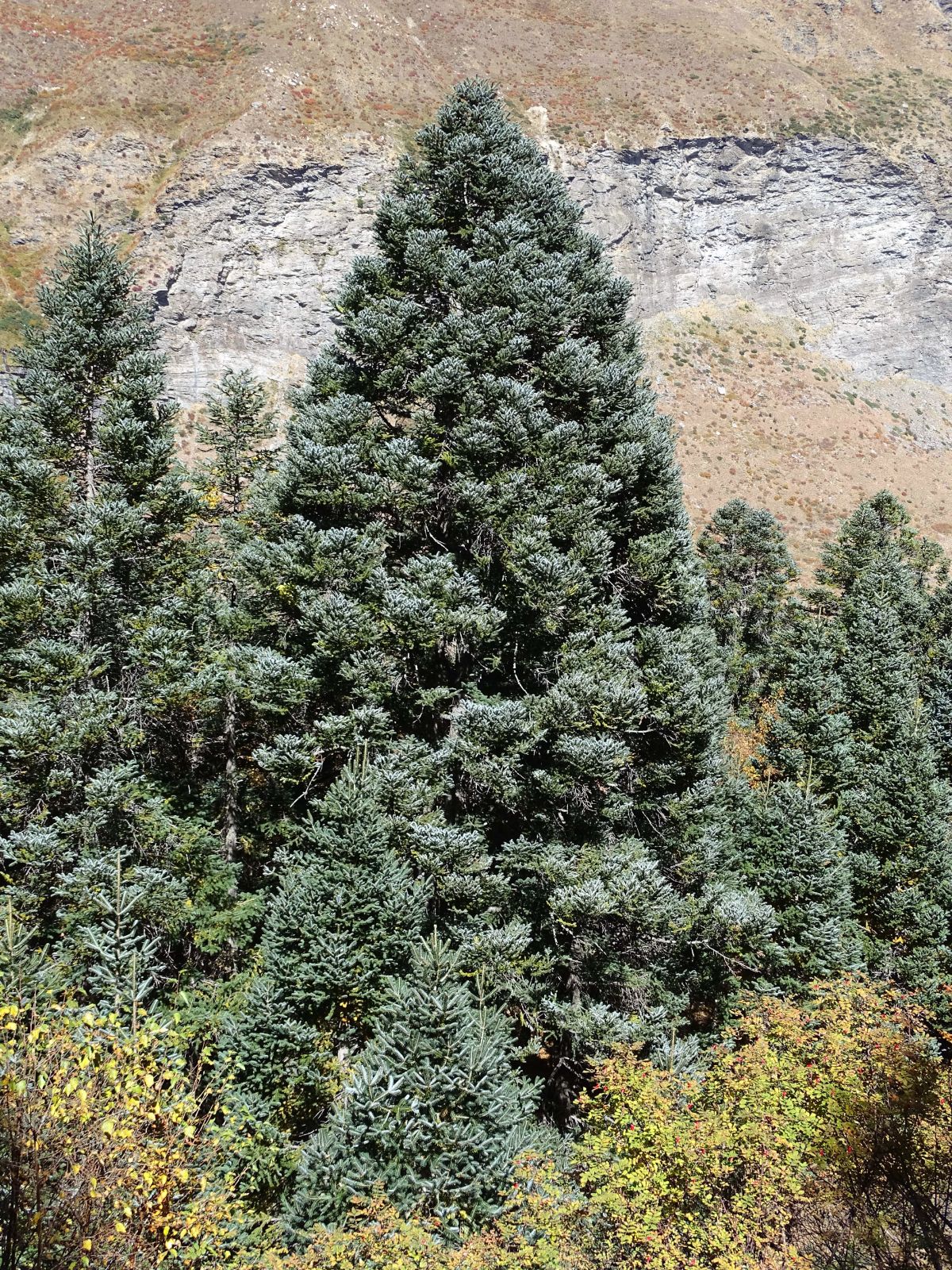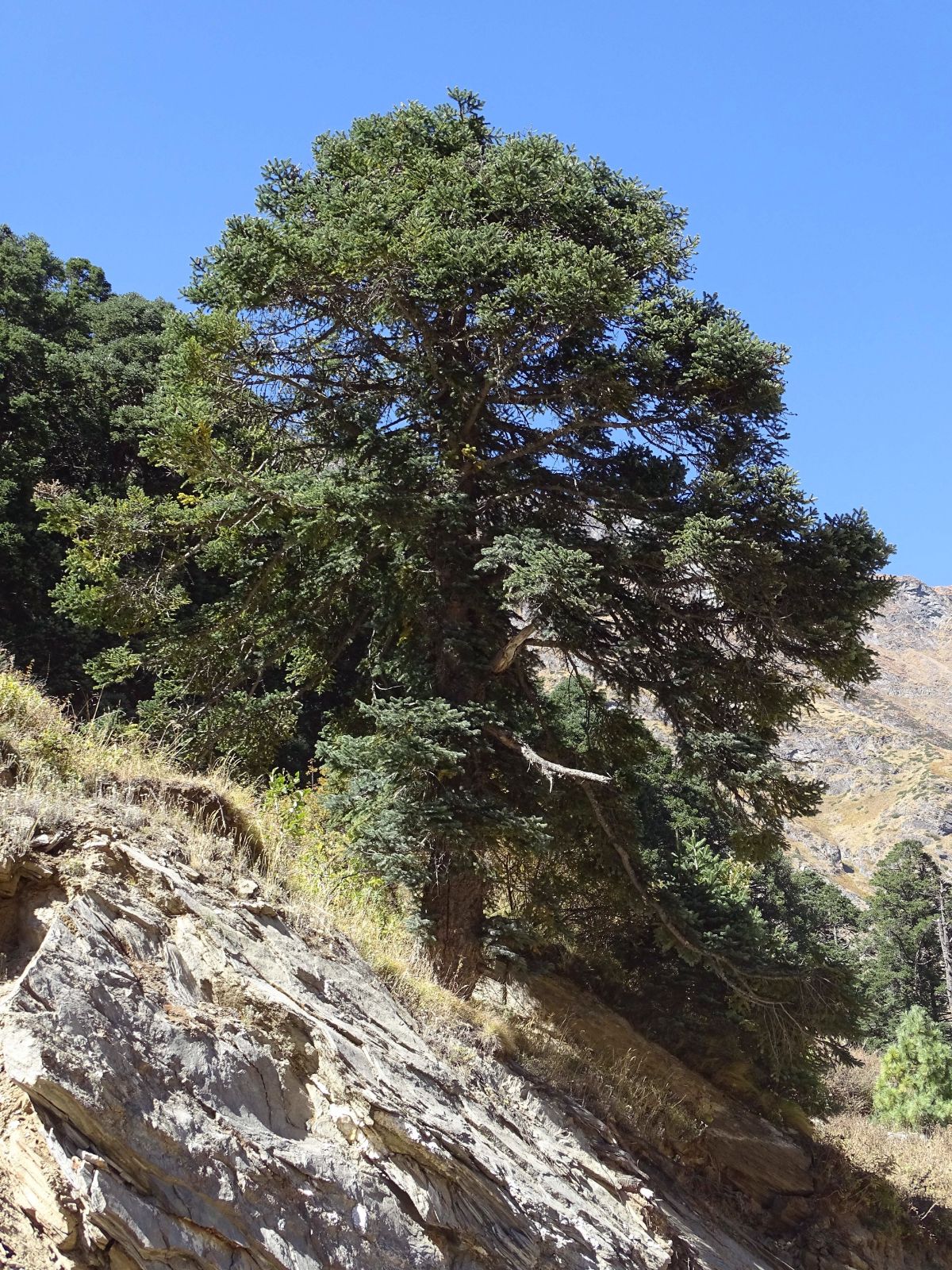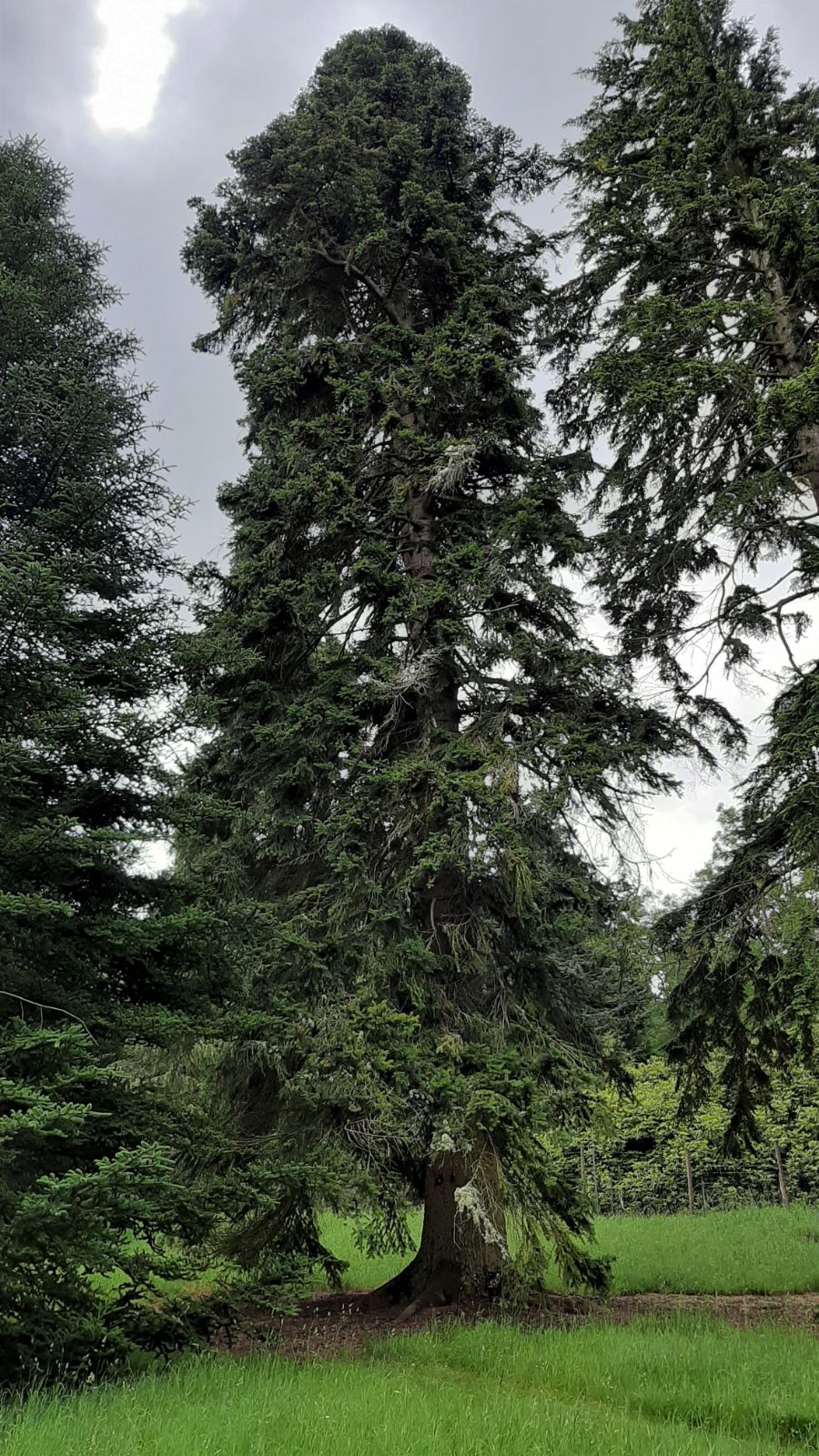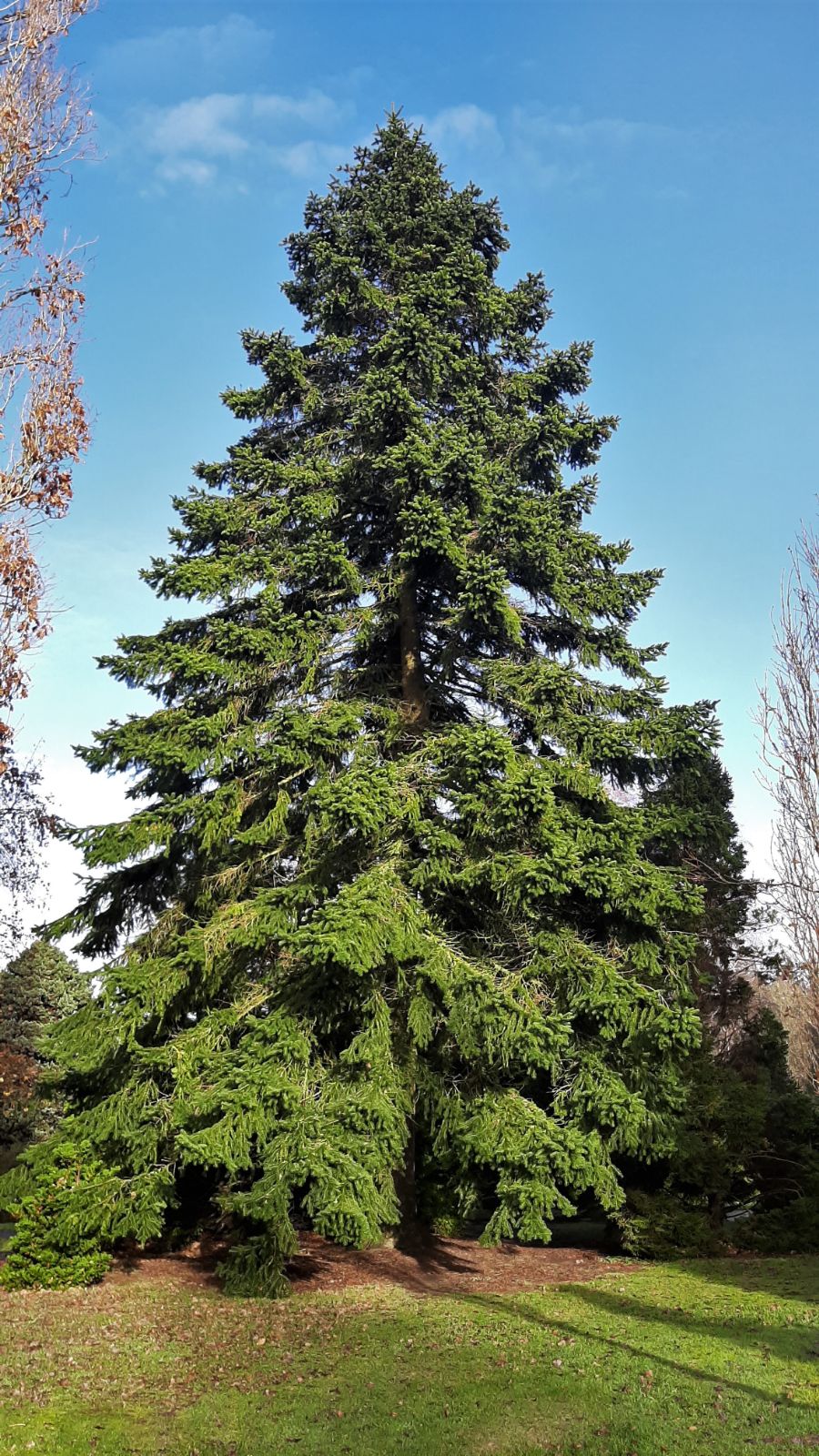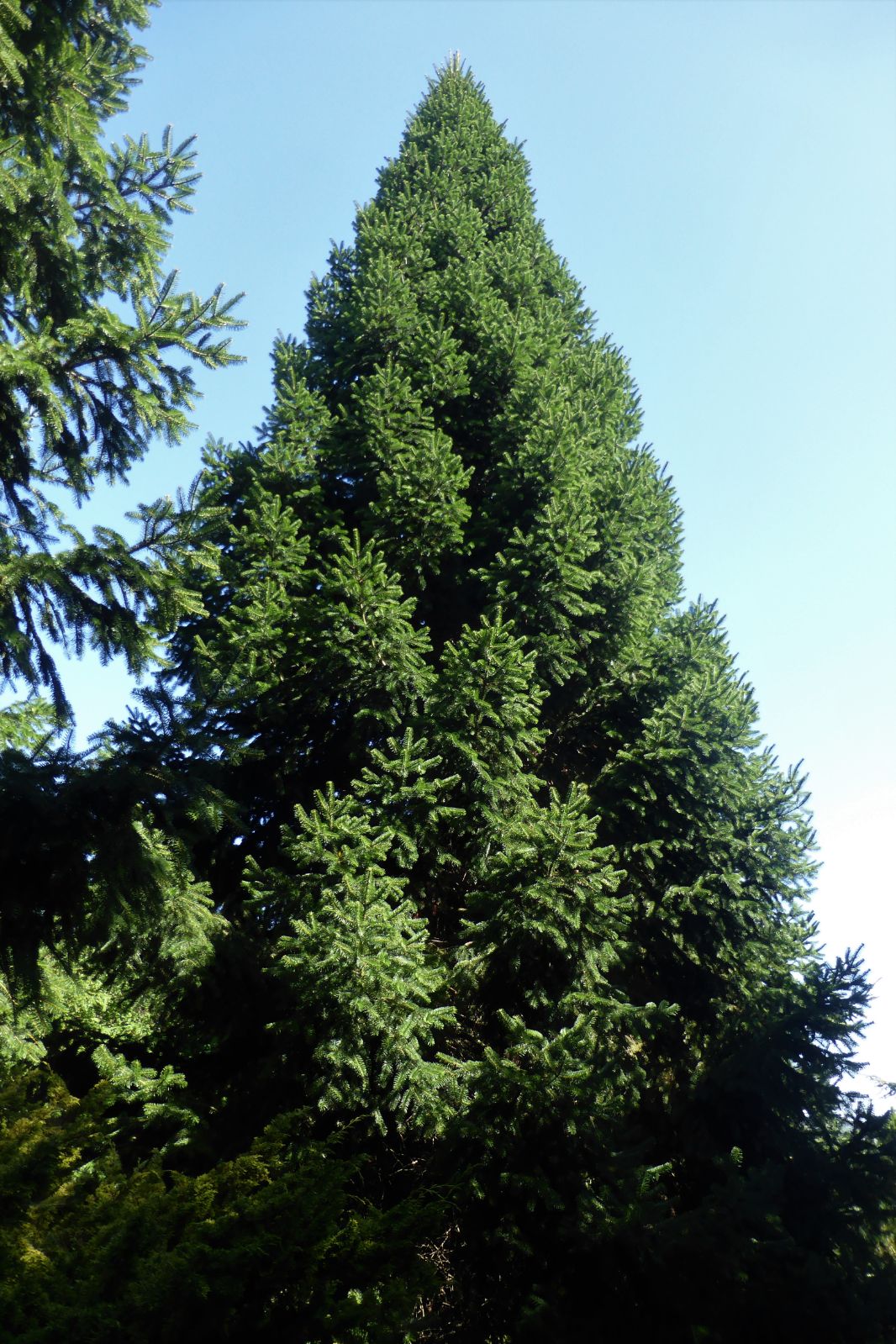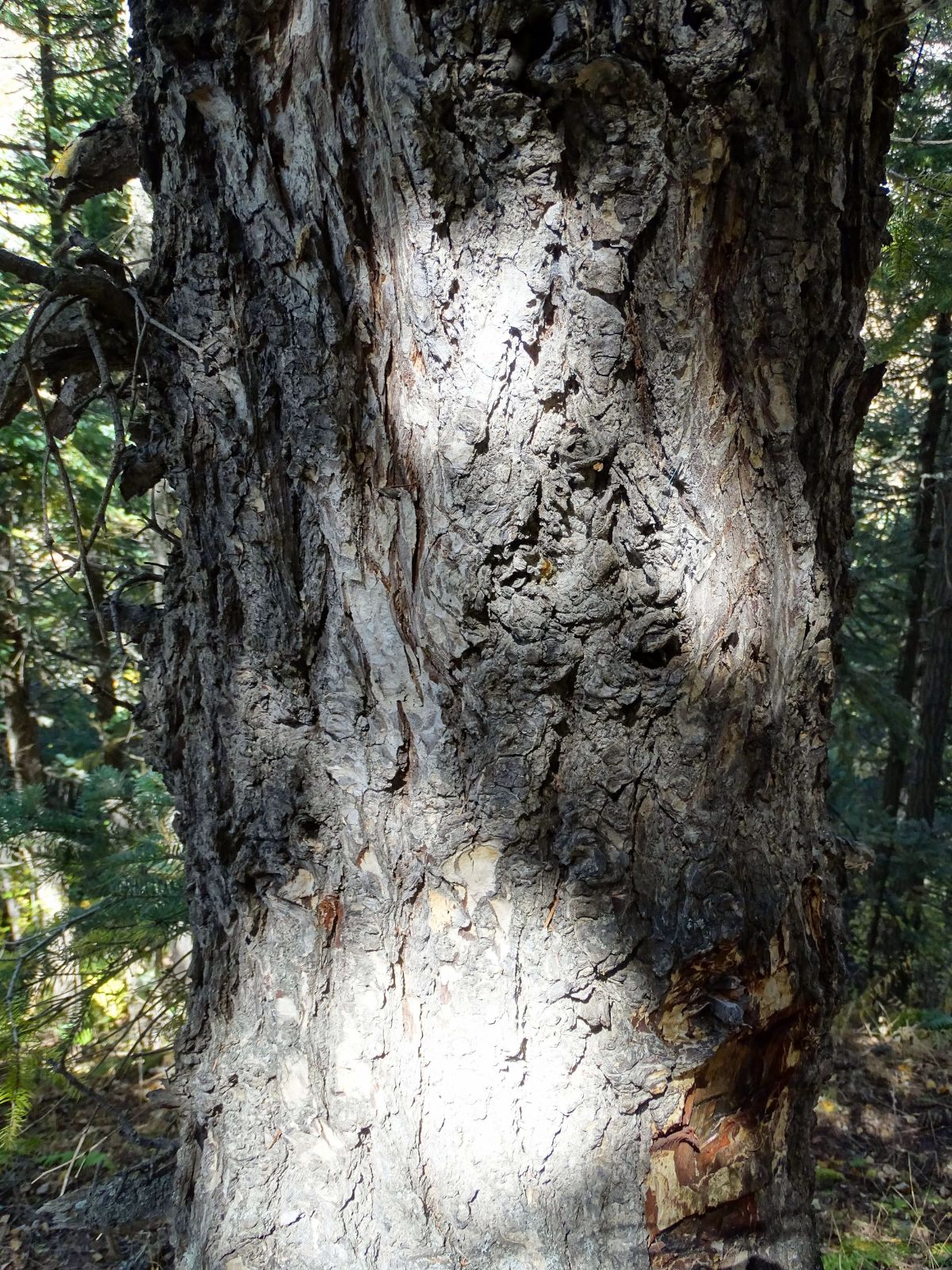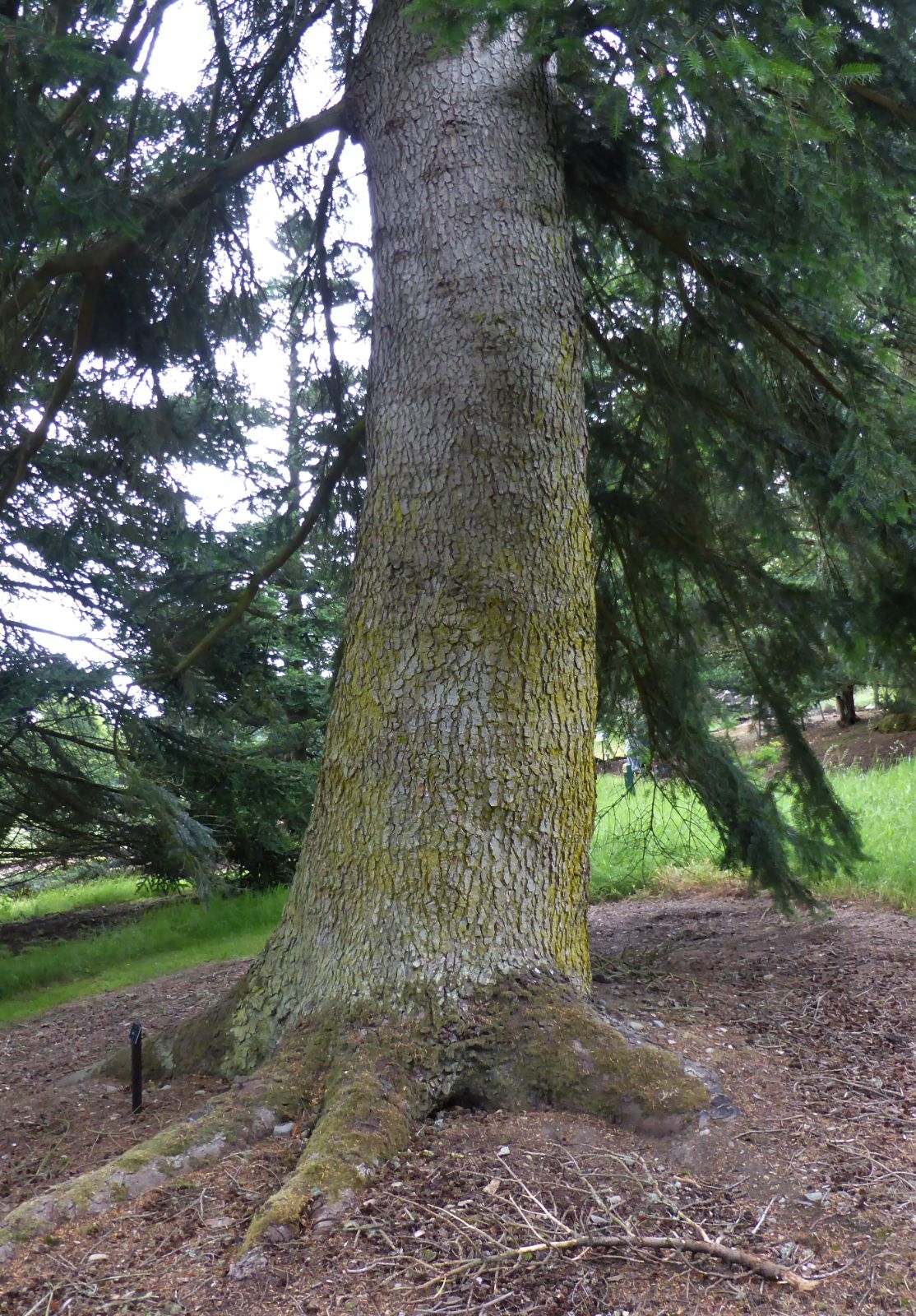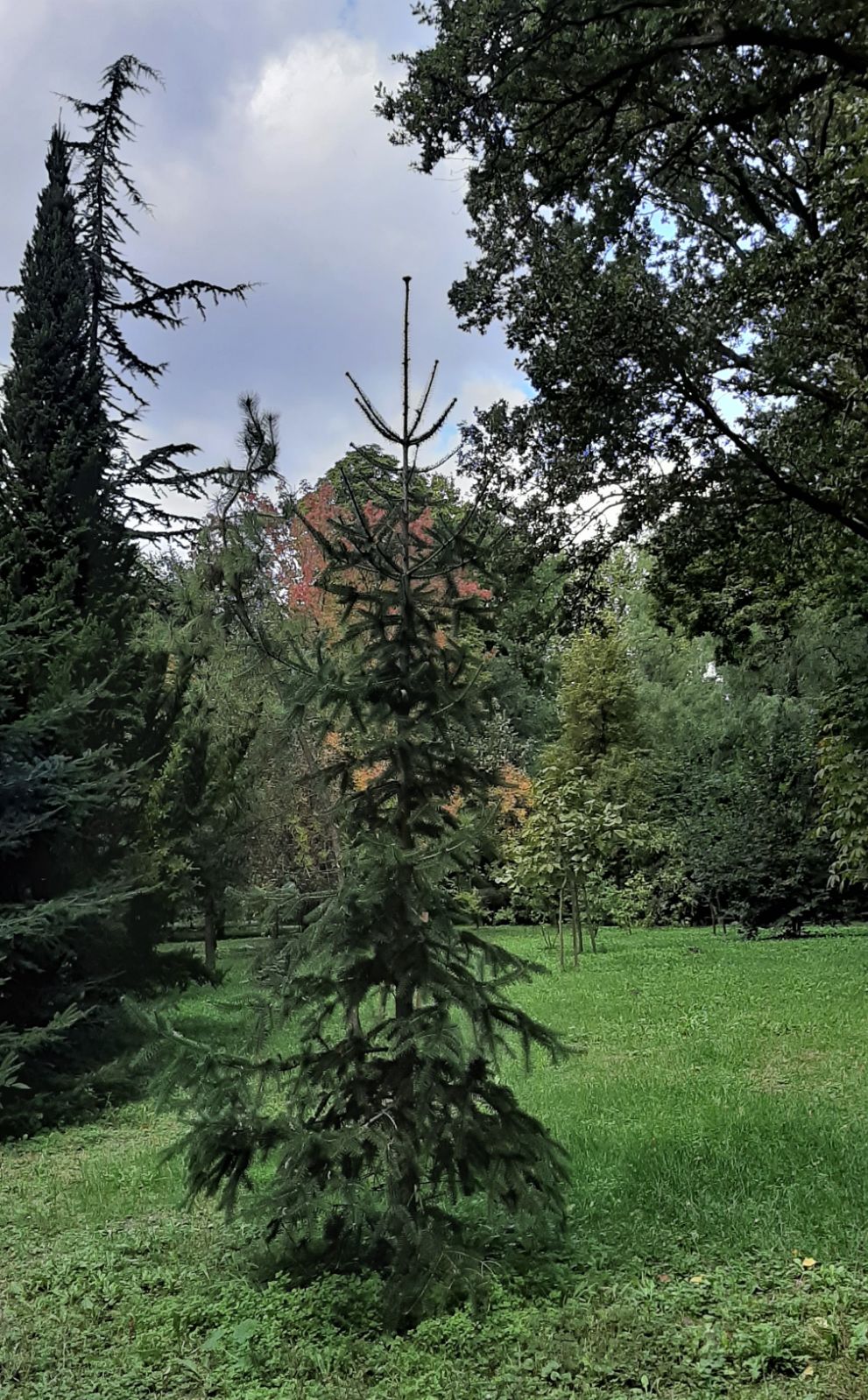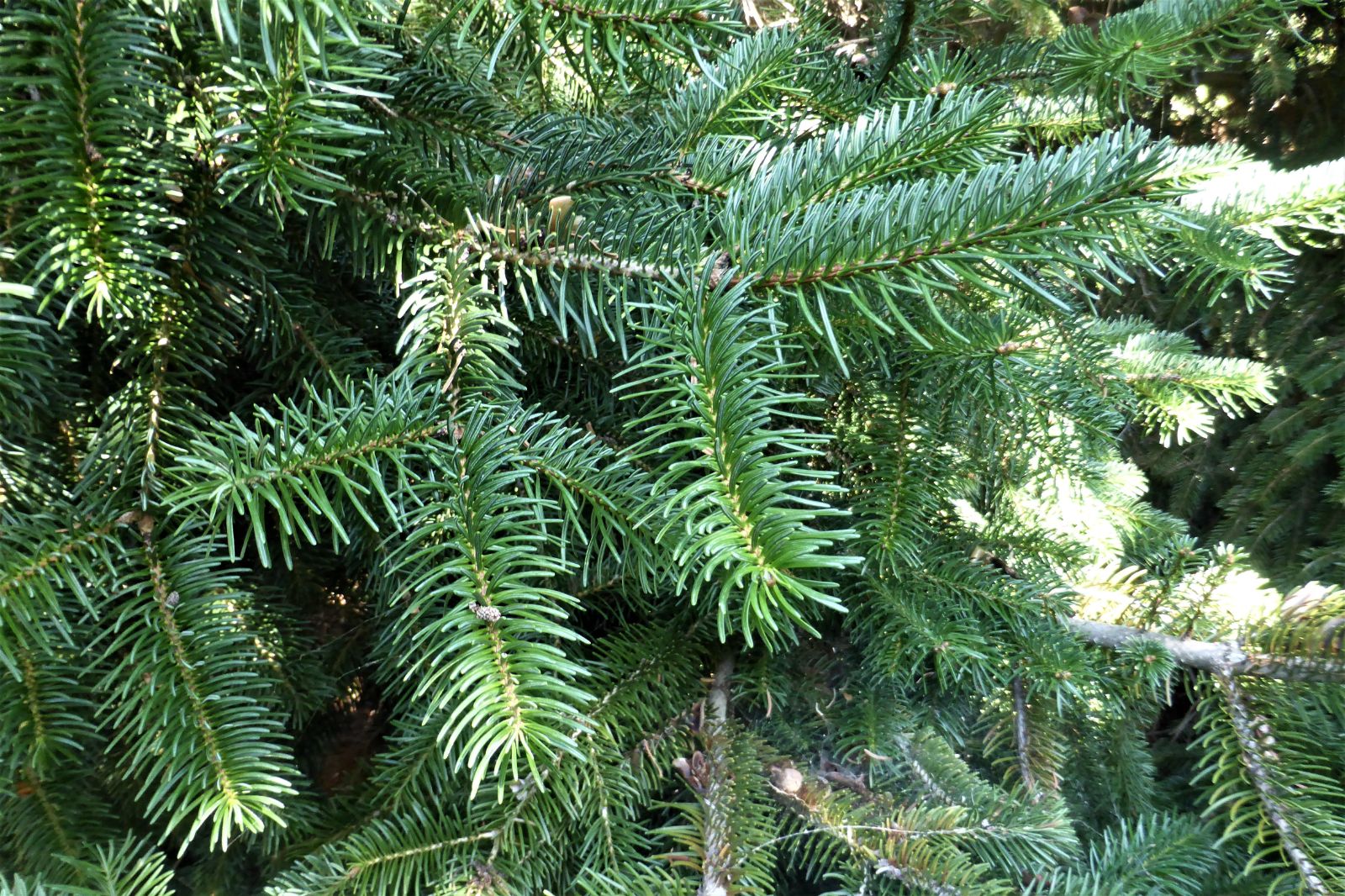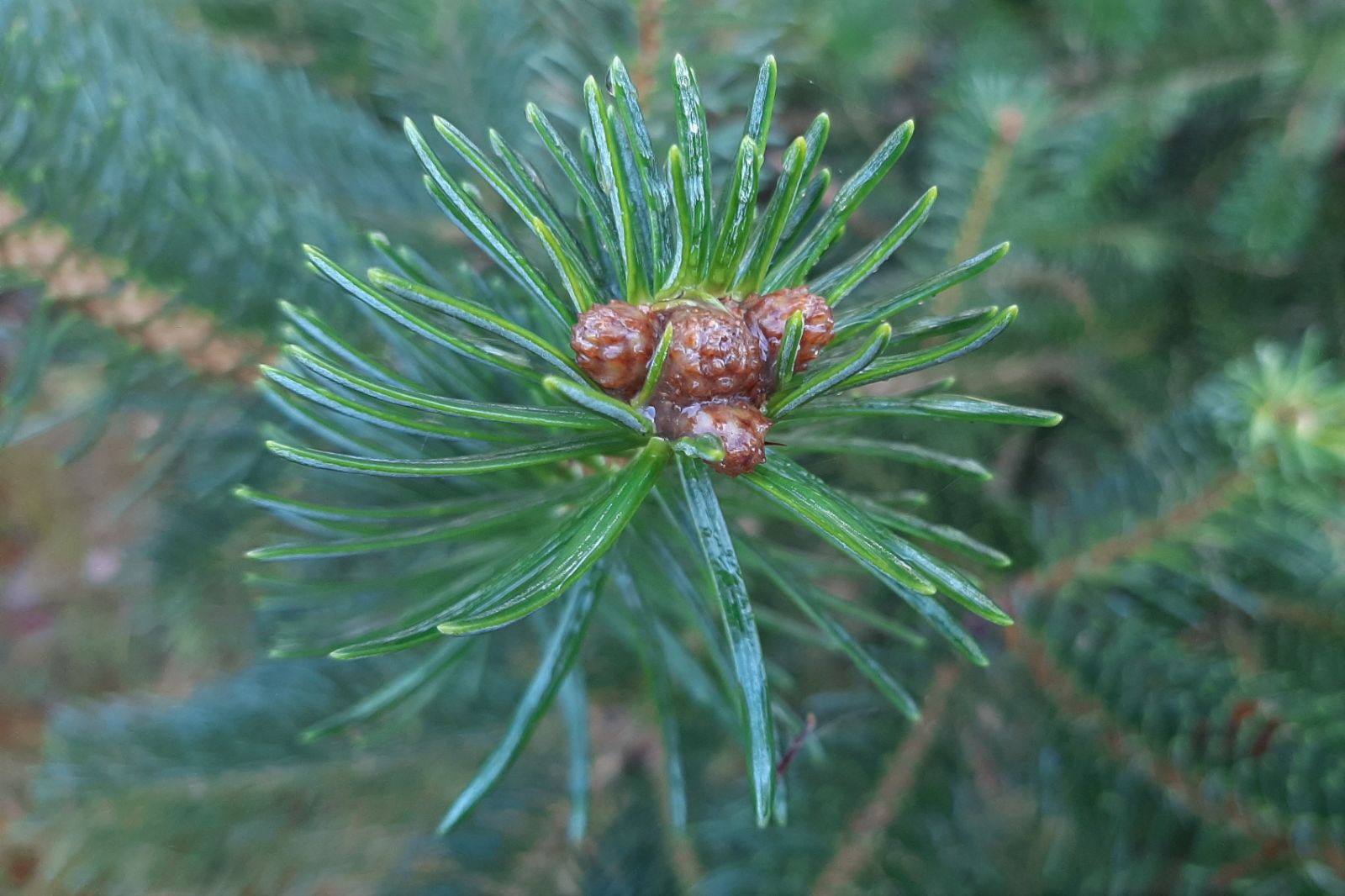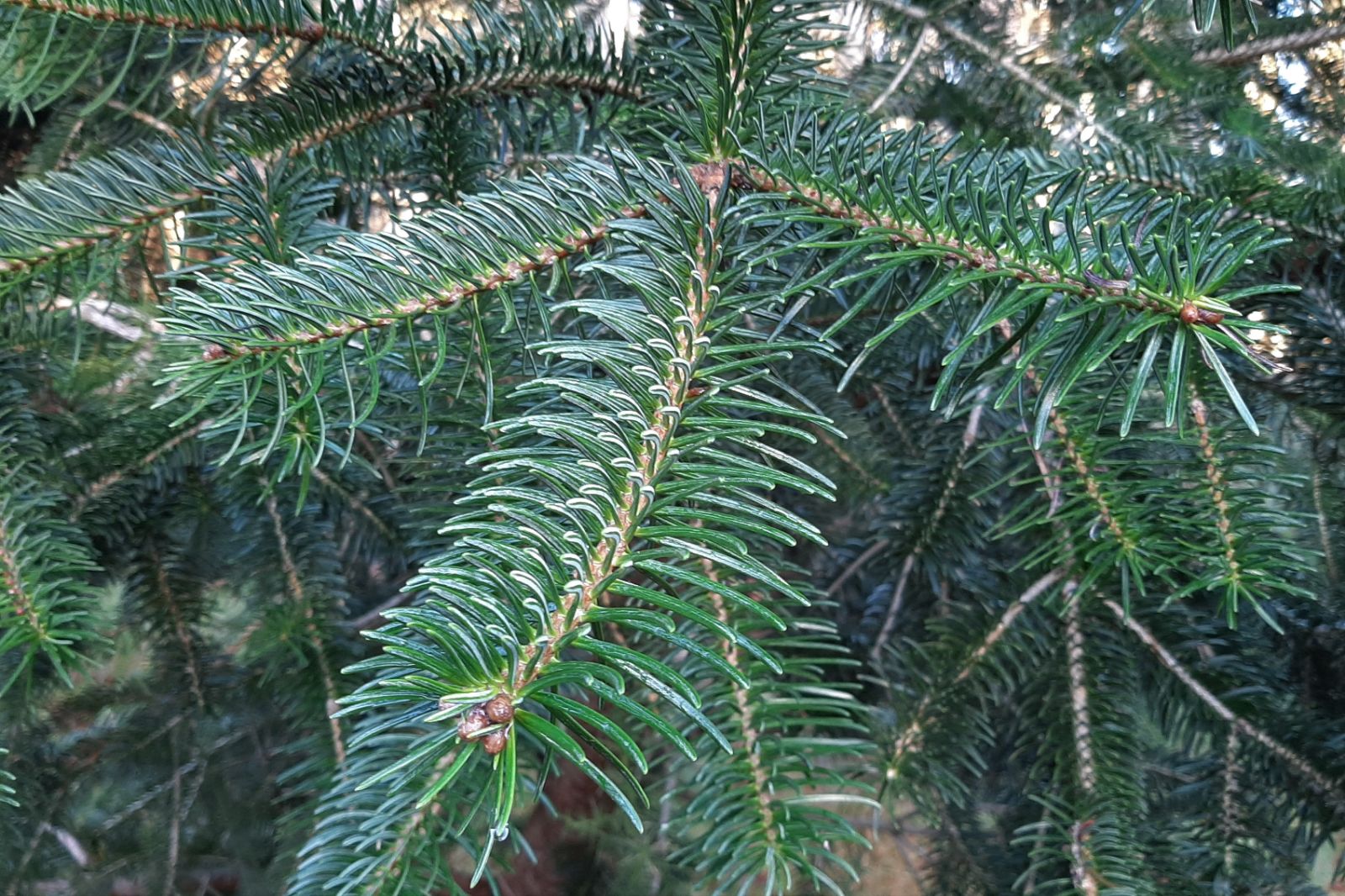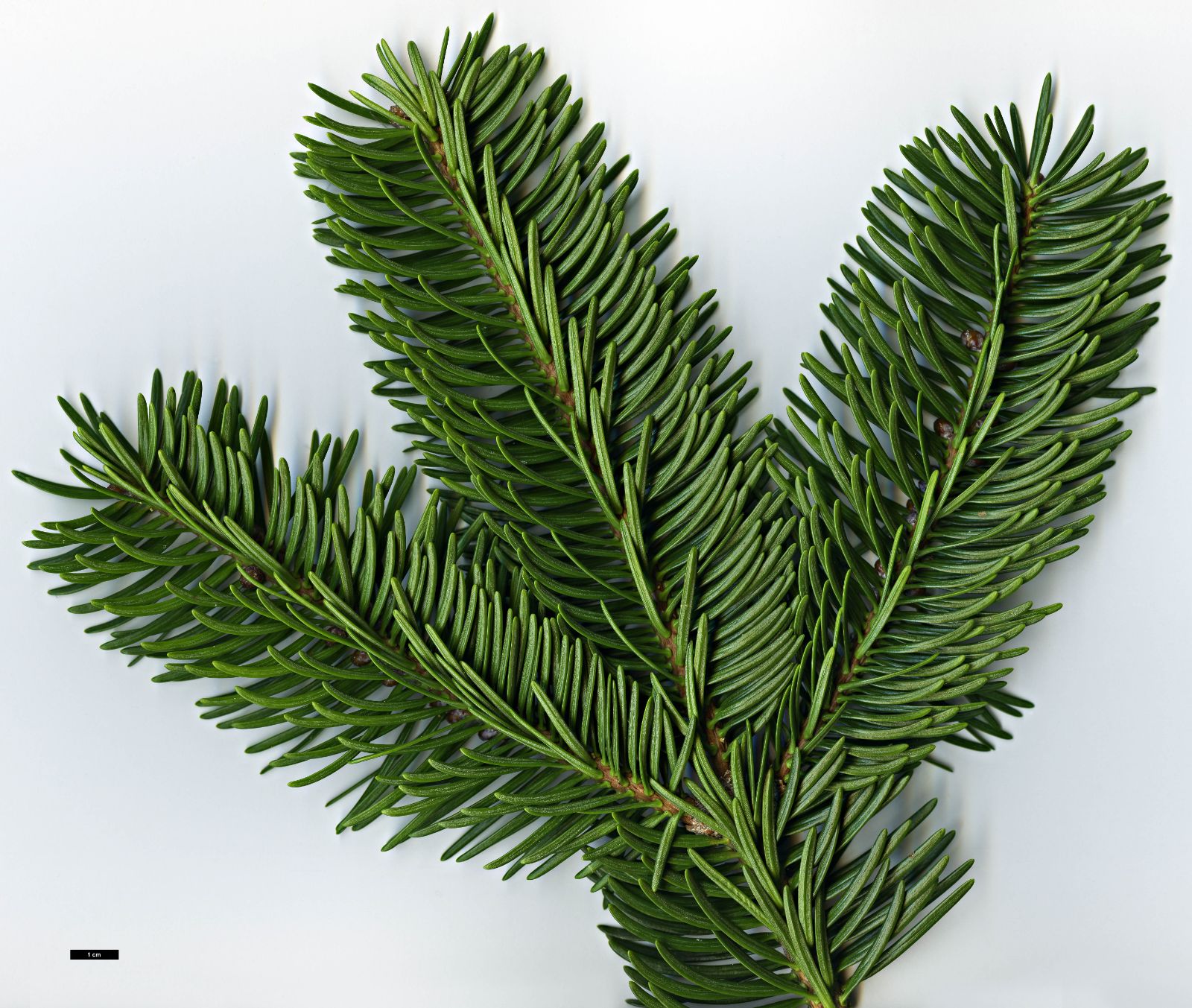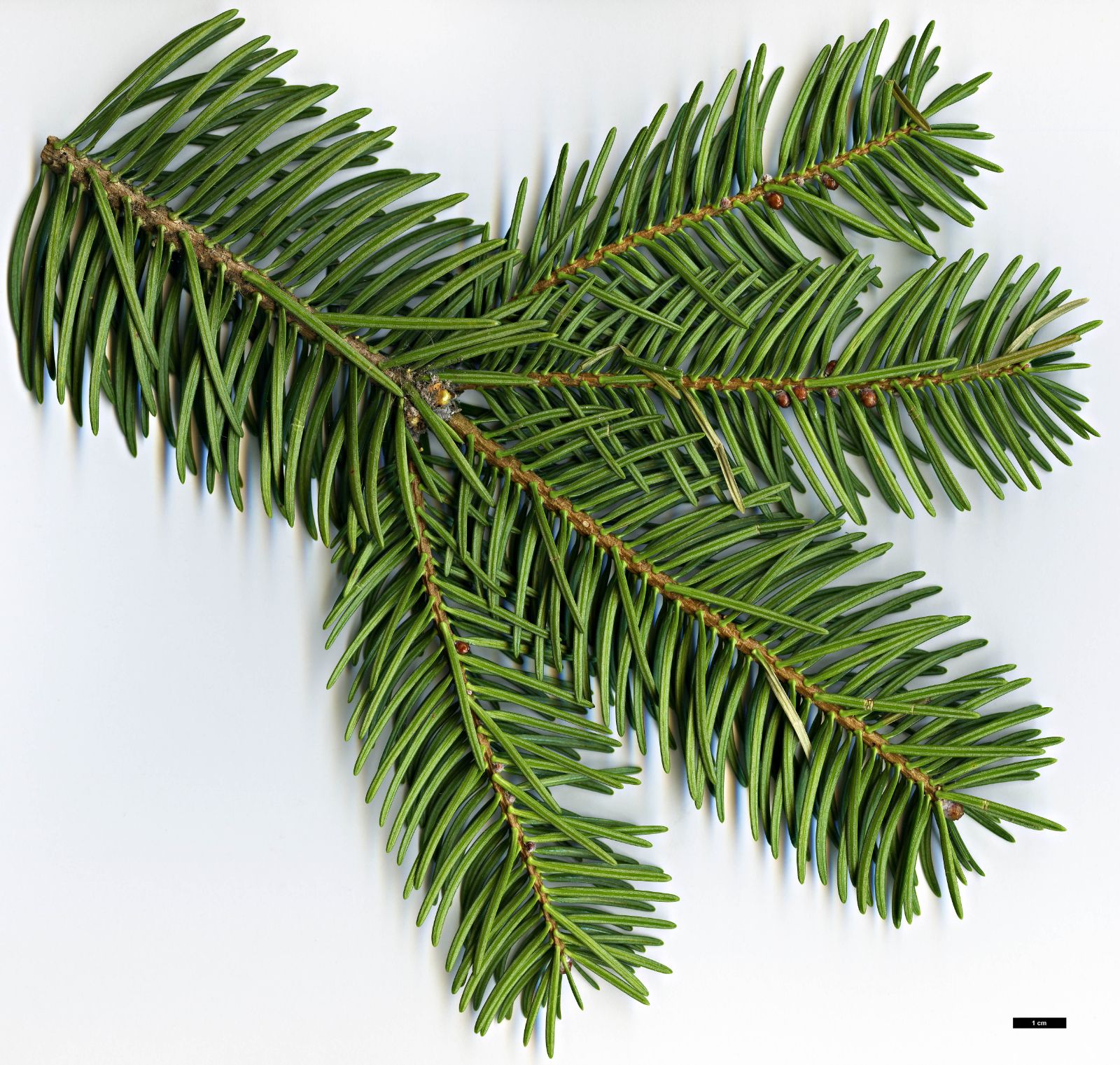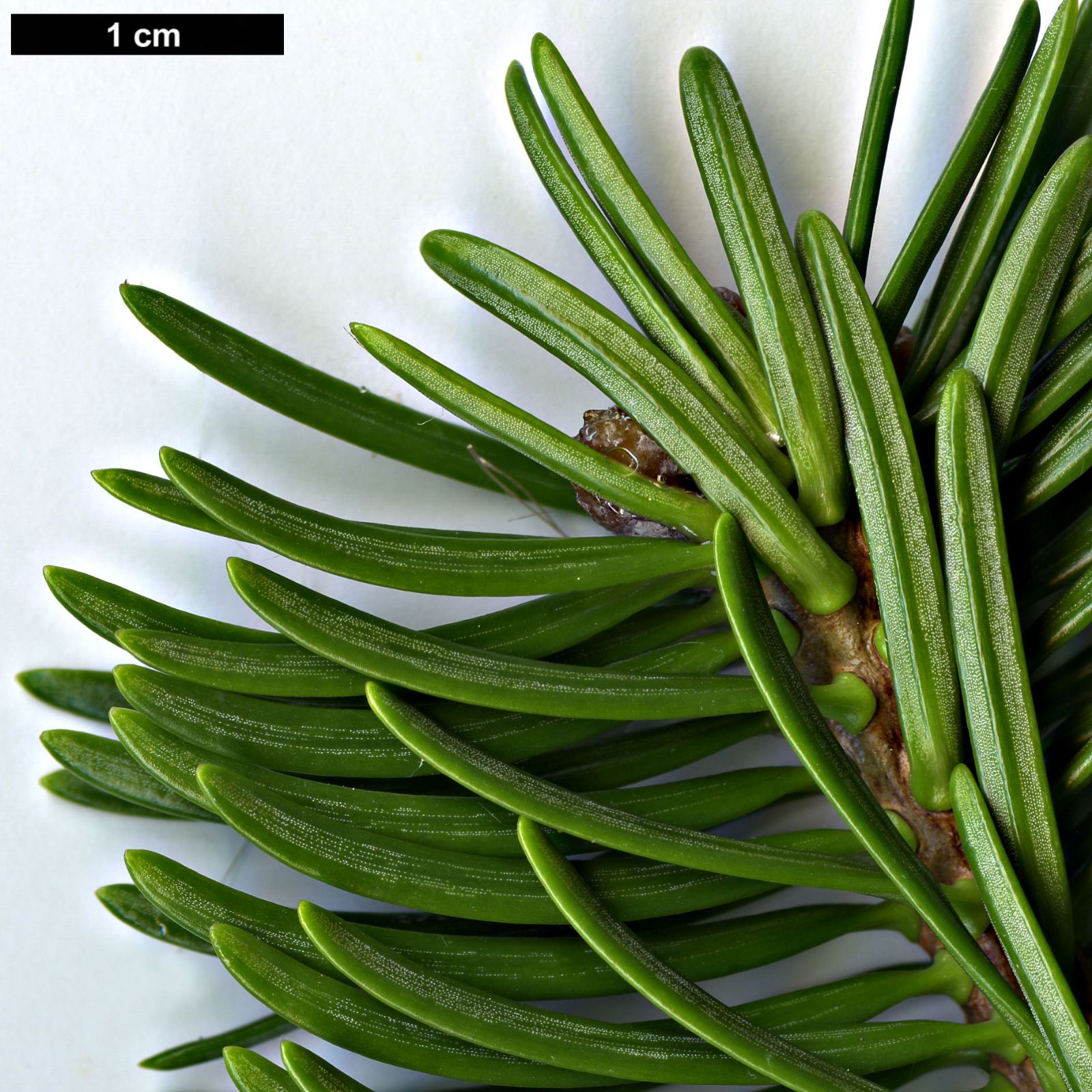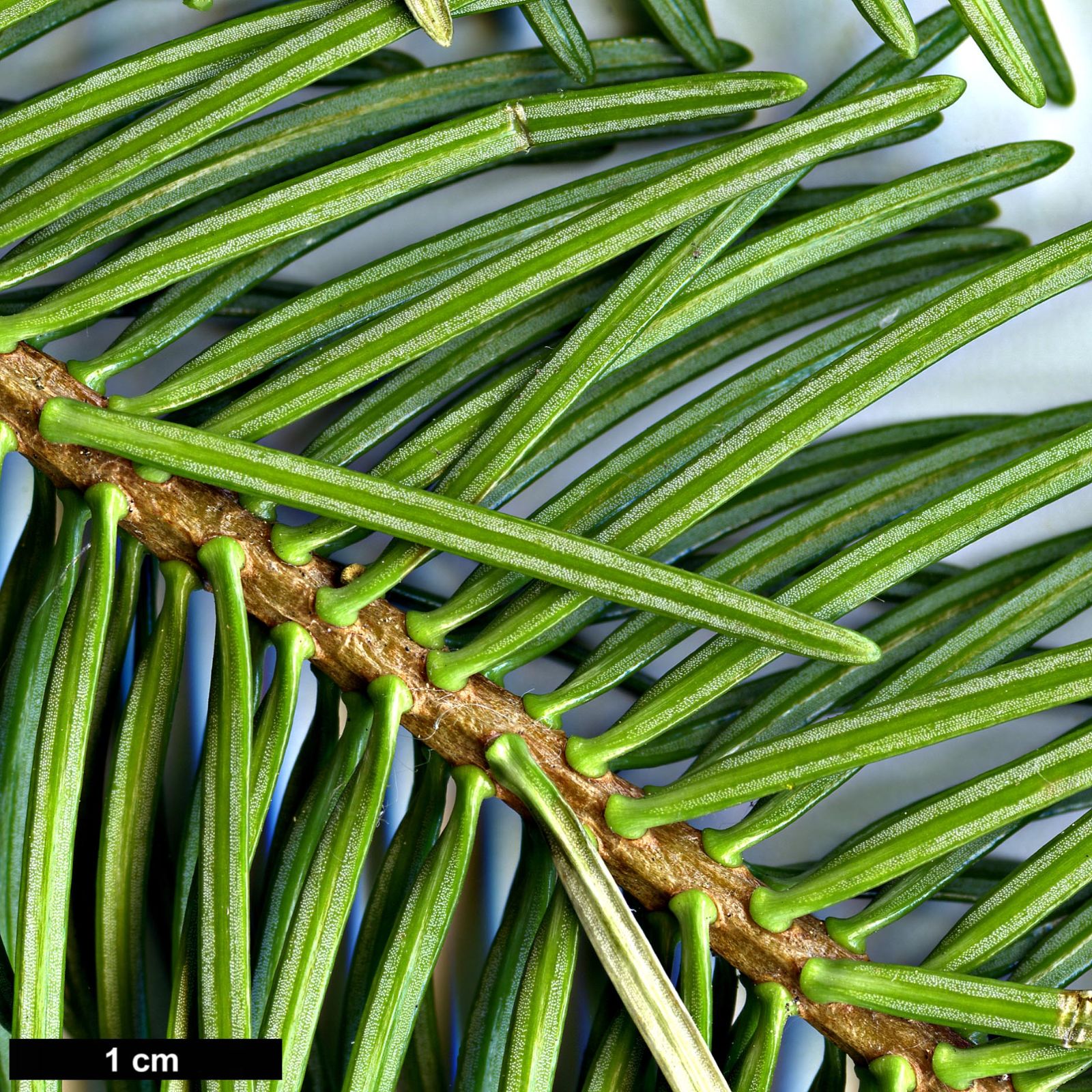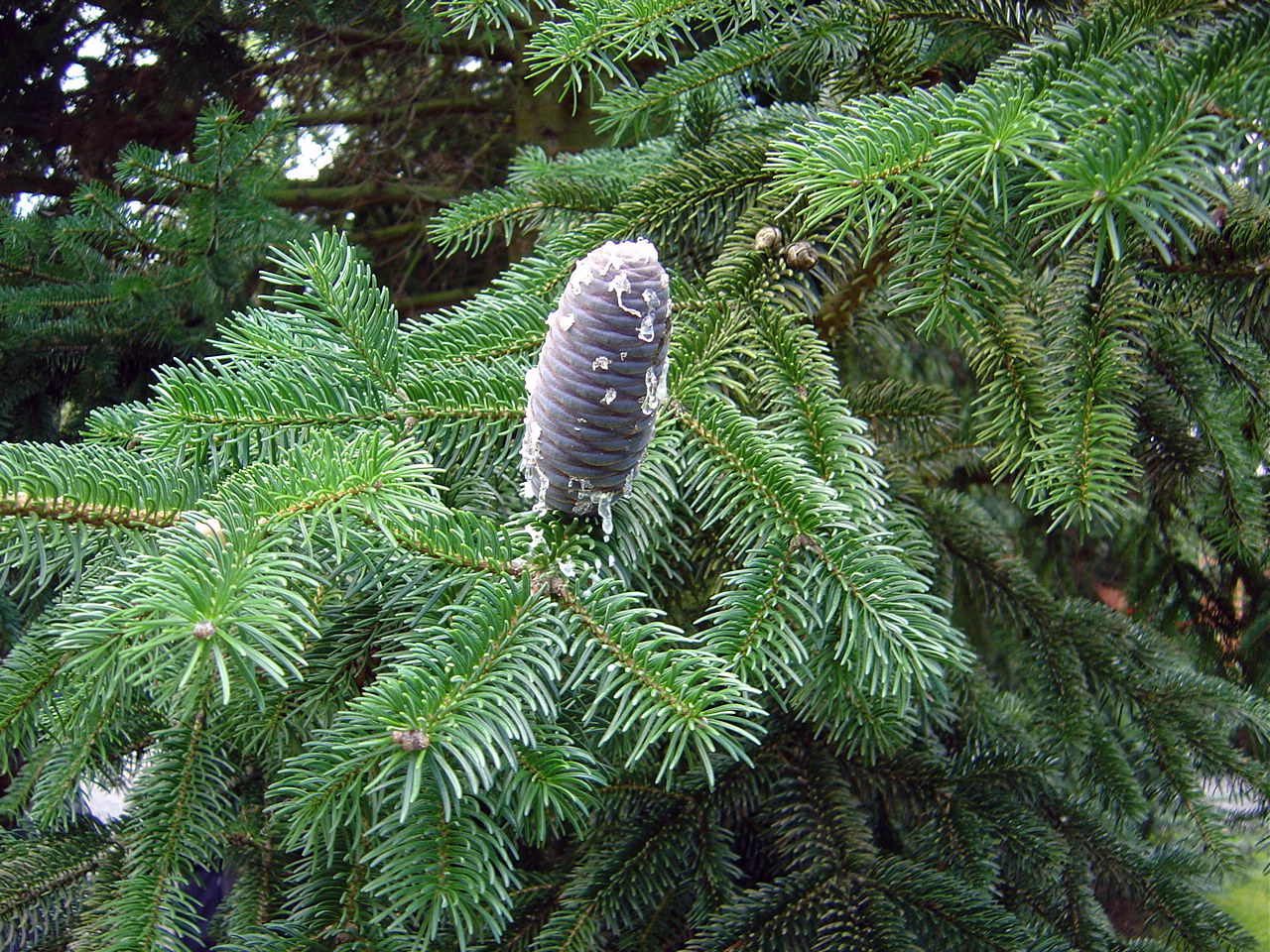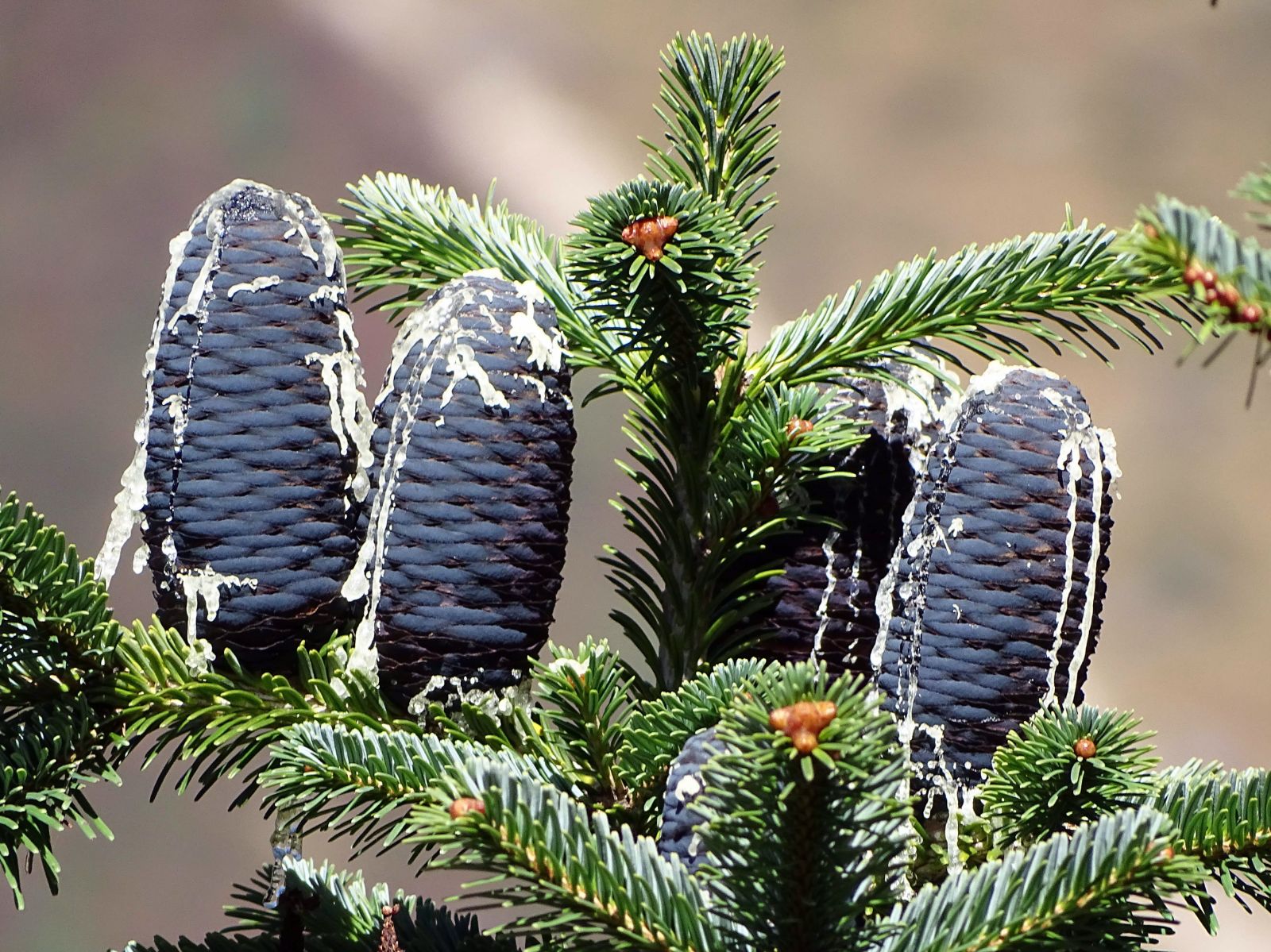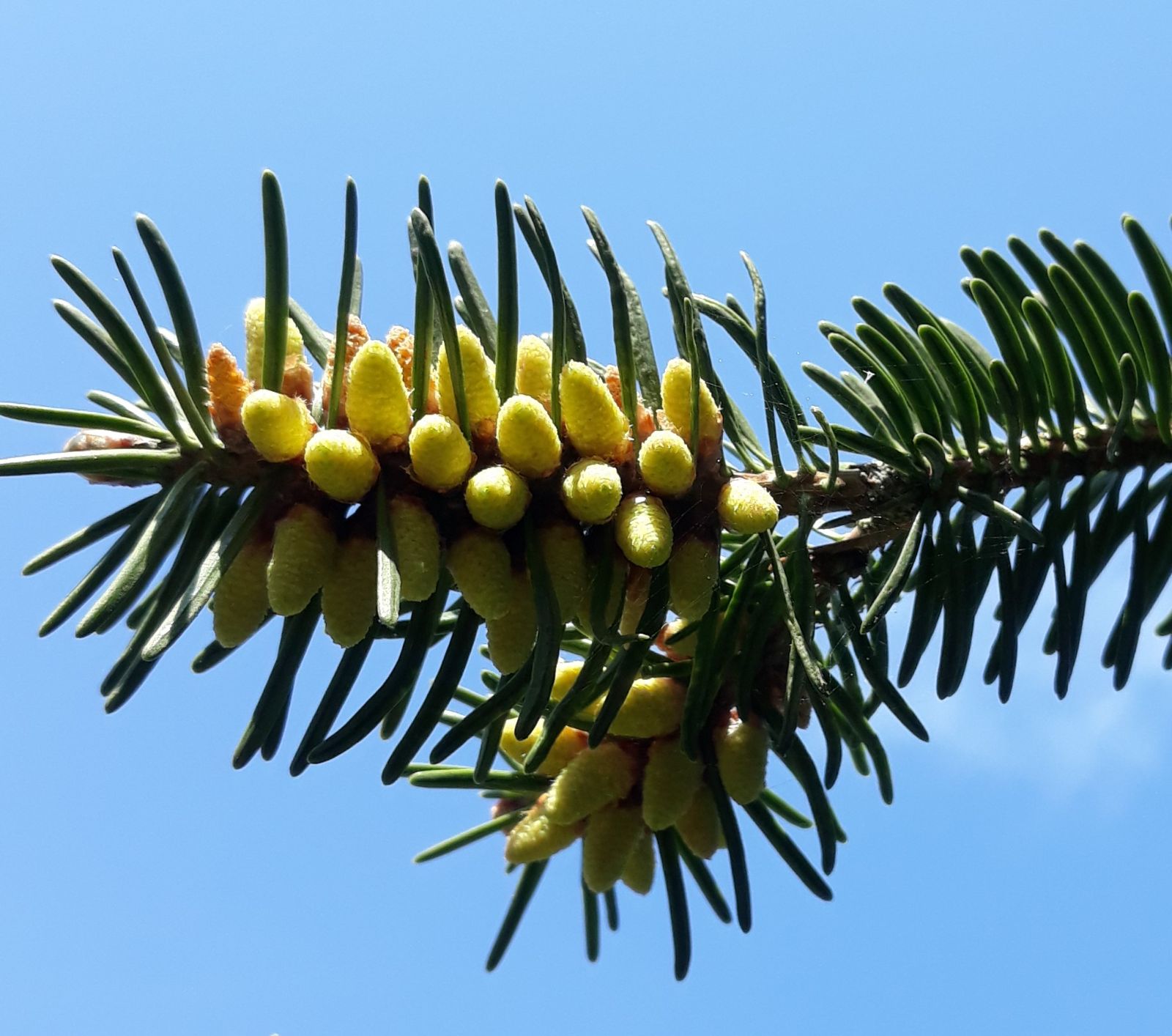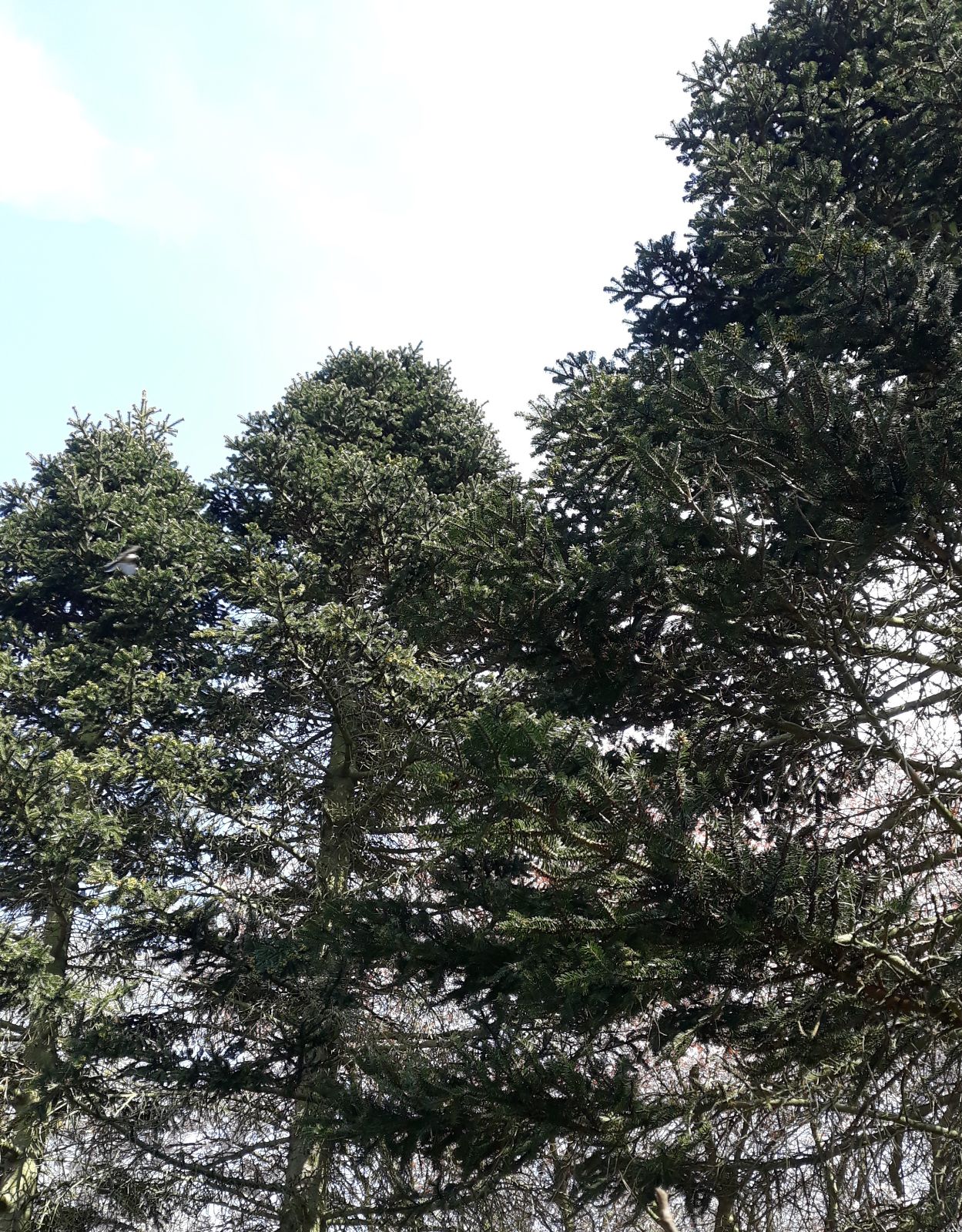Abies gamblei
Sponsor
Kindly sponsored by
Sir Henry Angest
Credits
Tom Christian (2021)
Recommended citation
Christian, T. (2021), 'Abies gamblei ' from the website Trees and Shrubs Online (treesandshrubsonline.
Genus
Synonyms
- Abies pindrow var. brevifolia Dallim. & A.B. Jacks.
- Abies pindrow subsp. gamblei (Hickel) Rushforth
- Abies pseudochensiensis Debreczy & Rácz
- Abies × vasconcellosiana Franco
Other taxa in genus
- Abies alba
- Abies amabilis
- Abies × arnoldiana
- Abies balsamea
- Abies beshanzuensis
- Abies borisii-regis
- Abies bracteata
- Abies cephalonica
- Abies × chengii
- Abies chensiensis
- Abies cilicica
- Abies colimensis
- Abies concolor
- Abies delavayi
- Abies densa
- Abies durangensis
- Abies ernestii
- Abies fabri
- Abies fanjingshanensis
- Abies fansipanensis
- Abies fargesii
- Abies ferreana
- Abies firma
- Abies flinckii
- Abies fordei
- Abies forrestii
- Abies forrestii agg. × homolepis
- Abies fraseri
- Abies georgei
- Abies gracilis
- Abies grandis
- Abies guatemalensis
- Abies hickelii
- Abies holophylla
- Abies homolepis
- Abies in Mexico and Mesoamerica
- Abies in the Sino-Himalaya
- Abies × insignis
- Abies kawakamii
- Abies koreana
- Abies koreana Hybrids
- Abies lasiocarpa
- Abies magnifica
- Abies mariesii
- Abies nebrodensis
- Abies nephrolepis
- Abies nordmanniana
- Abies nukiangensis
- Abies numidica
- Abies pindrow
- Abies pinsapo
- Abies procera
- Abies recurvata
- Abies religiosa
- Abies sachalinensis
- Abies salouenensis
- Abies sibirica
- Abies spectabilis
- Abies squamata
- Abies × umbellata
- Abies veitchii
- Abies vejarii
- Abies × vilmorinii
- Abies yuanbaoshanensis
- Abies ziyuanensis
Tree to >30 m, to 1.5 m dbh. Crown conical-pyramidal, remarkably unform in young cultivated trees, becoming somewhat columnar with age. Bark of young trees smooth, ash-grey, later greyish-brown, breaking into long, scaly ridges. Branches slender, spreading, dense, somewhat less so in the lower part of the tree. Branchlets stout, yellowish-brown in their first year, later greyish, smooth or shallowly grooved, glabrous, or pubescent in grooves on vigorous leading shoots, somewhat pendulous in the lower crown, especially on shaded branches. Vegetative buds ovoid-subglobose, obtuse, reddish-brown or brown, resinous. Leaves radially arranged, adpressed above the shoot, somewhat stiff, weakly curved and swept forward, somewhat parted above on shaded shoots, 2–4(–7?) cm long, apex blunt or sharp-pointed (in second year needles), with two broad continuous stomatal bands beneath and two narrow stomatal bands near the apex above, or broken along the full length above. Seed cones cylindrical to conical, 12–14(–16) cm, apex rounded, dark grey-blue to purplish when immature, ripening to pale purplish-brown, resinous; bracts entirely included; rachis slender cylindrical-conical. (Debreczy & Rácz 2011; Liu 1971).
Distribution India Himachal Pradesh, Uttarakhand, and probably westward in appropriate habitat with a distribution similar to that of A. pindrow
Habitat Sub-alpine coniferous forests above c. 3000 m asl (in India, but perhaps at lower elevations in drier valleys further west)
USDA Hardiness Zone 5-7
RHS Hardiness Rating H7
Conservation status Not evaluated (NE)
As Abies pindrow yields to altitude it is gradually replaced in the eastern-most parts of its range by A. spectabilis, which grows higher and extends the genus’ distribution eastward, while in other areas it is replaced by a fir differing most obviously in its somewhat shorter, stiffer leaves, with a more radial arrangement (Debreczy & Rácz 2011). Taxonomic opinion remains split on how to treat this entity of the western Himalaya. Debreczy & Rácz (2011) suggest that it is ‘easily distinguished from the three other endemic Himalayan Firs [A. pindrow, A. spectabilis, A. densa]’ and treat it at species rank as A. gamblei; Farjon (2017) follows earlier authors in treating it as A. pindrow var. brevifolia; Rushforth (1987) recognised A. gamblei but a decade or so later observed that it could be treated as a subspecies, A. pindrow subsp. gamblei, because it is altitudinally ‘and thus ecologically separated from [A. pindrow]’ (Rushforth 1999). Its status as a wild plant is poorly understood: its natural range is not fully known and opportunities to study it in the wild have long been hampered by various geopolitical obstacles, not to mention the acute remoteness of much of its known – and assumed – range (Debreczy & Rácz 2011).
Plants fitting A. gamblei in cultivation tend to be very uniform and quite distinct – they differ from A. pindrow in certain vegetative characters, most especially the more radial leaf arrangement; the shorter, stiffer leaves often with stomatal bands on both surfaces; and the broader crown of young trees (pers. obs.). These characters could plausibly be the result of adaptation to environmental factors such as high altitude or low precipitation, and place these trees at one end of an ecological cline which, at its other end, is represented by typical A. pindrow. Neverthless, it seems better at the present time to give A. gamblei the benefit of the doubt, not only because it requires further study in its wild state, but also because the cultivated population of this species embodies some unrelenting mysteries which, taken together, render A. gamblei one of the more enigmatic members of a genus already full of enigmas.
Not only do Debreczy and Rácz choose to recognise A. gamblei at species rank, they also distinguish it from A. pseudochensiensis Debreczy & Rácz, which they described in 2010 from material they had observed in multiple European collections over some 50 years, in Hungary, Portugal, and the UK. Although described from cultivation they assume it must have originated from an introduction of wild origin; in their discussion of A. pseudochensiensis they say ‘we can imagine this fir growing somewhere in a dry valley in the western Himalayas or adjacent ranges in habitats similar to that of A. gamblei’ (Debreczy & Rácz 2011, p. 1014). Certainly, based on Debrecy and Rácz’s discussions, there is a greater likeness between A. gamblei (as they define it) and A. pseudochensiensis than there is between A. gamblei and the already similar A. pindrow. Several specimens in UK arboreta studied by Debrecy and Rácz, and determined by them as their new species, were previously labelled A. gamblei. Whilst they offer several points of distinction it is a moot point whether these warrant taxonomic differentiation at species rank. As Rushforth (1987) has pointed out ‘considerable deforestation’ has occurred in areas traditionally associated with A. gamblei, so it is not impossible that Debreczy and Rácz’s A. pseudochensiensis represents a form of A. gamblei perhaps now extinct, or at the very least much reduced in the wild.
In addition to the dubious distinction between A. gamblei and A. pseudochensiensis Debreczy & Rácz (2011) acknowledge the affinities between A. pseudochensiensis and cultivated material labelled A. × vasconcellosiana. Indeed, they go so far as to suggest ‘it can be assumed with great likelihood’ that these two names represent the same entity, but for various technical reasons this has not yet been proven (Debreczy & Rácz 2011, p. 1013). Franco described A. × vasconcellosiana from cultivation in 1946, one year after observing trees growing in the Peña Park in Sintra, near Lisbon, Portugal. He considered these trees, then about 40 years old and c. 20 m tall, intermediate between A. pindrow and A. pinsapo and concluded that they were a chance hybrid of cultivation (Liu 1971). A cross between these two species would certainly be a distant, but not impossible hybrid, but quite how anyone could be certain c. 40 years after the event that A. pindrow had been the seed parent (e.g. Liu 1971, Krüssmann 1985) is less clear. Franco named his new taxon for Professor J. de Carvalho e Vasconcellos, but the original trees upon which he based his description had all died by 1995 (Debreczy & Rácz 2011). Material bearing this name, and presumably propagated from the Sintra trees, was modestly distributed among major European collections and is still occasionally encountered, for example at the Sir Harold Hillier Gardens (pers. obs. 2020), but as Rushforth (1987) observed, this material is ‘very similar’ indeed to trees labelled…A. gamblei!
During the course of research for this account trees were examined in multiple arboreta bearing the names A. gamblei, A. pindrow var. brevifolia, A. pseudochensiensis, and A. × vasconcellosiana, and no consistent nor significant differences were observed that could support the view that these names represent more than one entity (pers. obs. 2020). Debreczy and Rácz themselves concede that if A. pseudochensiensis turns out to be identical with A. × vasconcellosiana their name would fall into synonymy of the (amended) latter, but this is not to suggest that Franco was correct in assuming hybrid origin. It seems more likely that Debreczy and Rácz were correct to infer a natural origin because in any scenario the affinities with A. gamblei have become impossible to ignore. A comprehensive molecular investigation is clearly needed to resolve the questions surrounding this complex of names, although such a study would be somewhat limited by the very small numbers of samples whose pedigree could be assured. A further complication is that not one of the mature trees extant in collections seems to have any associated record that connects it to an original collection, nor even to a nursery, compounding the mystery even further. The oldest name at species rank in this muddle is A. gamblei, which was published in 1929, and if these dubiously distinct taxa are taken to be identical it is this name which should stand. Consequently, it seems sensible to continue to use this name, and to relegate the names A. pindrow var. brevifolia, A. pseudochensiensis, and A. × vasconcellosiana to synonymy with a broad interpretation of A. gamblei.
In the wild, Debreczy and Rácz suggest A. gamblei is largely restricted to the sub-alpine zone above 3000 m asl. In the Shimla district of Himachal Pradesh they recall seeing it ‘with an increasing groundcover of Juniperus communis var. saxatilis…and J. indica’ (Debreczy & Rácz 2011, p. 241). Further east in the Baspa valley they observe that ‘at about 2800 m A. gamblei with some overlap replaces A. pindrow, occurring with Picea smithiana and Cedrus deodara at their upper limit at 2900–3100 m; from there upward A. gamblei occurs with Pinus wallichiana’ (Debreczy & Rácz 2011, p. 242).
Given that the species has been cultivated under at least four names (that we know of) it is surprisingly seldom seen, and usually restricted to specialist collections. The tree that would set in motion the chain of events culminating in the publication of the name A. pseudochensiensis grew at the Kámon Arboretum in Hungary. In 1960 this was estimated to be 45 years old, giving a planting date of about 1915; it began to decline in the late 1970s and later died, but not before grafts had been taken which survive as two young trees in the arboretum which today forms part of the Hungarian Forest Research Institute (Debreczy & Rácz 2011). Much younger grafts, presumably from these descendents, are now growing in several other Hungarian collections including the Folly Arboretum, the Szarvasi Arboretum, and the Vácrátót Botanical Garden (pers. obs. September 2019). Another was found in the Botanic Garden of the University of Coimbra, Portugal, in 1995 (Debreczy & Rácz 2011) but it isn’t known whether this survives today. Multiple examples of A. gamblei grow in arboreta throughout the UK, but they are usually labelled as one of the names given here in synonymy. For example, A. gamblei is cultivated under three names at the Sir Harold Hillier Gardens: 19785564*W labelled A. pindrow var. brevifolia; 19777562*Y labelled A. chensiensis; 19824265*A labelled A. × vasconcellosiana. (These were the label names of each of the given trees when they were studied in December 2020).
A once large tree at Durris, Aberdeenshire, Scotland, had not regrown a lost top when Owen Johnson measured it in 2018; its dbh at that time was 1.11 m. This tree was grafted several times in the late 1990s and early 2000s and young clonal material is growing at nearby Crathes Castle (C. Pirnie pers. comm. 2020). Scions from this tree may also have occasionally been offered for sale by the firms Kirkdale Nurseries and Kilworth Conifers. The largest known in the UK is a tree at Dawyck Botanic Garden, Scotland, accession 19795150*A. Planted in 1913 (and thus of comparable age to the tree formerly at Kámon in Hungary) this was 34 m × 1.08 m dbh in 2014 (Tree Register 2020). In 2020 it was labelled A. pseudochensiensis (pers. obs. 2020).

